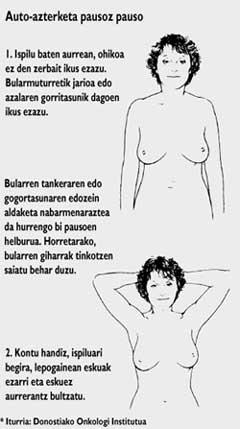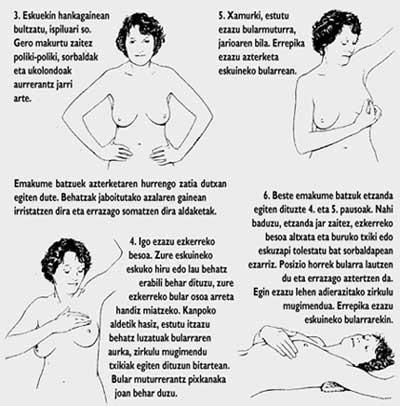Breast cancer: what to do?
Today the woman visits the gynecologist quite assiduously and has heard many words and tests. But what is mammography? What is breast self-examination? Is it true that mammography uses x-rays? First of all, and to put things in place, it must be said that in women
18 out of 100 tumors are breast. Therefore, the tumor is usual. But early breast cancer is the most curative tumor. And not only that! Many specialists claim that if treated early, with a limited surgical intervention, you get to keep your chest as before.
Let's look at studies that allow us to detect breast cancer or tumor in time.
Ultrasound
It is a technique that uses ultrasound. It is helpful for women in menopause or at a later stage. Ultrasound can accurately and appropriately interpret changes in breast tissue during this frequent phase of hormonal changes. This study is usually used as a complement to mammography, but it can also be used before it is done.
Self-analysis
Palpation or palpation of the breasts, of the two breasts, by means of clear notes and instructions (see figures above).
Before a mirror, and in different positions (standing, lying), the woman should touch the two breasts with her hand open. Expires or other rare things you may find so will be confirmed or cancelled later by other studies. This self-examination is recommended to all women.
Mammography
It is a direct radiological study of the chest that reveals possible alterations of breast tissues. It is done when a muzzle or lump is detected and to know if its nature is benign or malignant. Following the doctor's instructions, it will be done annually or every two years, depending on the woman's age, as well as the results of previous mammograms. It is especially recommended in women over 35 years of age and is a very effective means for early diagnosis.

Risk factors and protectors
Much research is being done on this subject, and what was said and preached a few years ago might be that tomorrow's work would be completely denied, but today it is believed that there are risk factors that can become protective factors at certain ages or for other reasons.
- It has been found that the presence of many pregnancies could facilitate the appearance of the tumor before menopause, but this fact acts as a protective factor in menopause.
- A diet rich in fats (and so are usually those in developed countries) can be a risk factor. And therefore, a smaller amount of feed fat would protect it.
- Another protective factor is early diagnosis, as it allows breast cancer to be “taken early”, including mammography, self-examination, and other tests.
What are the ages of risk? The risk of this type of cancer increases with the biological age of the person. Thus, before age 25, one in 20,000 women will have breast cancer and one in 10 women between age 80.
If we analyze the ages between fertility and menopause we can observe:
- With 40 years, one cancer case occurs for every 200 women.
- At age 45, a cancer case occurs for every 93 women.
- At age 50, a cancer case occurs for every 50 women.
- A case of cancer occurs at age 55 for every 30 women.
These data, prepared by the National Cancer Institute of the United States, show us the importance that has, especially from a certain age, to carry out checks and studies frequently.
Breast cancers do not usually decrease in size, but tend to grow from a certain age. Therefore, many experts recommend to women of any age mammography, always under the orders of their gynecologists. But today, the most widespread opinion does not go that way; instead of making mammograms indiscriminately, it is recommended that these controls be performed according to the age of the woman: Between 35 and 50 years the mammogram should be performed every 2-3 years and from 50 years each year.
As already mentioned, not all experts agree, but the consensus is total: it has been shown that the fight against breast cancer, especially from the preventive point of view, in the most advanced countries, the disease has decreased, so the early practice of self-review in the chest is certainly a golden standard.

Buletina
Bidali zure helbide elektronikoa eta jaso asteroko buletina zure sarrera-ontzian











